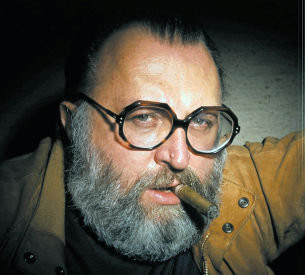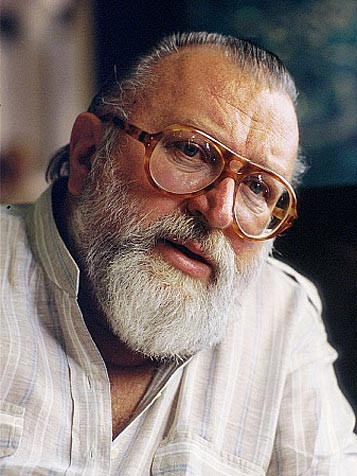Sergio Leone
Настоящее имя: Sergio Leone
Об исполнителе:
Birth: January 3, 1929 in Rome, Italy Death: April 30, 1989 in Rome, Italy Italian filmmaker/screenwriter/producer. Directed films such as "The Dollar Trilogy" (For A Fistful Of Dollars, For A Few Dollars More and The Good, The Bad & The Ugly), so popular that they gained their own monicker (Spaghetti Westerns) and launched the careers of its director, composer Ennio Morricone and star Clint Eastwood (2). He was born in Rome on 3 January 1929, the son of Vincenzo Leone, a silent film director known with the pseudonym Roberto Roberti, and of Bice Valerian, a well-known actress of the time. He made his debut in the cinema working as a voluntary assistant and extra, among other things, in "Bicycle Thieves (Ladri di biciclette)" (1948) by Vittorio De Sica. Later, he was for a long time assistant director to Mario Bonnard: in 1959, when Bonnard was ill, he took over from him on the set of “The Last Days of Pompei" (Gli ultimi giorni di Pompei), to finish filming. After assisting in the direction of "Ben Hur" (1959) by William Wyler and directing the second part of "Sodom and Gomorrah” (Sodoma e Gomorra) (1962) by Robert Aldrich, he finally directed the mythological "The Colossusof Rhodes” (Il colosso di Rodi) (1961), the first full-length film of his own. But the film that was to bring him to the general attention came out in 1964: "A fistful of dollars (Per un pugno di dollari)", directed under the pseudonym Bob Robertson in tribute to his father, marks a convincing start of the autarchic western, following the paths of baroque, overstated narration, bombastic and full of violence (although the theme was not original, clearly inspired by Akira Kurosawa's "Yojimbo (La sfida del samurai", 1961). His next films, "For a few dollars more (Per qualche dollaro in più)" (1965) and "The good, the bad and the ugly (Il buono, il brutto, il cattivo)" (1966) complete what came to be known as the "dollar trilogy" and were a great box-office success, reproposing a winning formula: an aggressive, captivating sound track by Ennio Morricone, wily and determined performances by Clint Eastwood (2) (but also of the excellent Gian Maria Volonté and Lee Van Cleef), and – from the point of view of style – a hyperbolic dilatation of the times of the narration which becomes, in parts, paradoxical solemnity of gesture."Once Upon a Time in the West (C'era una volta il West)" (1968) confirms these patterns and at the same time breaks away from them, depicting the end of the West and of the myth of the Frontier: for the occasion, the star Henry Fonda plays the role of a fierce, relentless assassin, while the rugged profile of Charles Bronson opposes him in a dark tale of revenge and death. This was followed by "A Fistful of Dynamite" (Giù la testa)" (1971), a colourful, animated pot-pourri about the revolution, set in the Mexico of Villa and Zapata, but which tends to stagnate between mannerist and ritual elements. The Roman director's masterpiece arrived with "Once Upon a Time in America (C'era un volta in America)" (1984). Fruit of a long period of preparation, the film, set in the years of Prohibition, presents a story about gangsters and friendship nearly four hours long, amid bullets and blood à la Damon Runyon and touching parenthesis of anguish à la Fitzgerald: the whole marked by an acute awareness of memory with a Proustian flavour, with the contribution of fine actors (Robert De Niro is the one who first comes to mind, but James Woods is an excellent second) and the memorable sound track by Ennio Morricone. Leone’s artistic career stops here: he was taken from us by a heart attack in his house in Rome on 30 April 1989, while working on an ambitious project for a film on the Siege of Leningrad.




